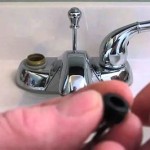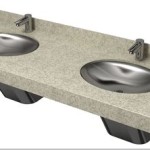Decoding the Crane Bathroom Sink Colors: A Visual Guide
Crane Co., a prominent manufacturer of plumbing fixtures, significantly impacted bathroom design for much of the 20th century. A particularly notable contribution was its extensive range of colored bathroom sinks, toilets, and tubs. These weren't just functional items; they were integral components of interior design, reflecting the popular aesthetics of each decade. Understanding the color palette offered by Crane is key to accurately dating and appreciating vintage bathroom fixtures and reconstructing period-appropriate designs.
This article explores the Crane bathroom sink color offerings, providing insight into the timelines, influencing factors, and potential meanings associated with each color. While a complete, centralized “official” Crane color chart does not exist publicly, archival research, surviving product catalogs, advertisements, and comparisons with known color standards allow for a reasonable approximation. This information is valuable for homeowners restoring vintage bathrooms, antique enthusiasts, and researchers studying the material culture of the mid-century modern era.
It's crucial to understand that color perception can be subjective. Variations in lighting, monitor settings, and even the age of the fixture can affect how a color appears. Furthermore, some color names may vary slightly across different sources. Therefore, this guide provides a general overview and should be considered a starting point for more in-depth research.
The Dawn of Colored Fixtures: Early Offerings
Before the widespread adoption of color, most plumbing fixtures were exclusively white. Crane was among the pioneers that introduced color options to the market, transitioning bathrooms from purely utilitarian spaces to rooms with decorative potential. Early colors were often muted and subtle, reflecting a sense of understated elegance.
While precise dates are difficult to pinpoint without comprehensive catalogs, some colors that emerged in the early to mid-20th century include:
White: While not technically a "color" in the same sense as others, it's the baseline and most ubiquitous. White remained a constant offering throughout Crane's history, often available in slightly different shades, such as "Arctic White" or "Bone White."
Ivory: A soft, warm off-white color, Ivory offered a subtle alternative to stark white, providing a touch of warmth and sophistication. It was a popular choice for creating classic, timeless bathrooms.
Orchid: A delicate, pale lavender or pink hue. This color suggests a sense of femininity and luxury and was likely introduced to appeal to homeowners seeking a softer, more decorative aesthetic.
Pale Green: Early green shades were often subtle and muted, such as a light seafoam or mint green. These colors created calming and refreshing bathroom environments, reflecting the growing interest in natural themes.
The availability of these colors varied depending on the specific product line and the year of manufacture. Further research, including examination of dated advertisements and catalogs, will offer more specific information.
Mid-Century Modern Colors: Boldness and Optimism
The post-World War II era witnessed a surge in consumerism and a shift towards more vibrant and optimistic design trends. This was reflected in the bolder and more saturated colors that Crane introduced during the mid-century modern period (roughly the 1940s to the 1960s). The influence of technological advancements in pigment production allowed for a wider range of hues and greater colorfastness.
Key mid-century modern Crane colors include:
Pink: A very popular color during this era, Pink was often bright and cheerful. Different shades of pink, such as "Powder Pink" or "Sunrise Pink," were offered, each contributing a slightly different mood to the bathroom. Pink bathrooms became a symbol of post-war optimism and feminine style.
Turquoise: A vibrant blue-green color that captured the essence of the mid-century modern aesthetic. Turquoise evoked a sense of coastal living and technological advancement. It frequently paired with other bold colors like pink and yellow.
Yellow: A sunny and cheerful color that added a touch of warmth to the bathroom. Yellow shades ranged from soft pastels to brighter, more saturated yellows, bringing a sense of energy and optimism to the space.
Seafoam Green: A lighter, more muted version of the earlier green shades. This color maintained a refreshing and calming feel while aligning with the bolder color palettes of the mid-century modern era.
Gray: While not a traditionally "vibrant" color, various shades of gray gained popularity during this period, often used as a neutral backdrop to showcase the brighter accent colors. Gray represented a sense of sophistication and modernity. Shades like "Cloud Gray" were common.
These colors were often featured in coordinating suites, where sinks, toilets, and tubs were all manufactured in the same color. This allowed homeowners to create a cohesive and visually appealing bathroom design.
The 1970s and Beyond: Earth Tones and Beyond
The design trends of the 1970s shifted away from the bright, saturated colors of the mid-century modern era and towards more earthy and natural tones. This was influenced by the growing environmental awareness and a desire for more grounded and organic aesthetics. Nevertheless, other bolder palettes continued to be offered alongside the earth tones.
Common colors from the 1970s and later include:
Avocado Green: A very popular color during the 1970s, Avocado Green reflected the interest in natural themes and earthy tones. It was often paired with other earth tones like brown and orange.
Harvest Gold: Another popular 1970s color, Harvest Gold, offered a warm and inviting alternative to brighter yellows. It complemented avocado green and brown, creating a cohesive and earthy bathroom environment.
Brown: Various shades of brown, from light beige to dark chocolate, became prevalent during the 1970s. Brown provided a sense of warmth and stability, aligning with the grounded aesthetics of the era.
Bone: A soft, off-white color that offered a neutral and versatile option. Bone was often used as a backdrop to showcase other colors or as a standalone color for a minimalist aesthetic.
Blue: While blue had been present, the 70s brought deeper, more subdued blues. These ranged from navy to more muted shades that reflected a calmer, more sophisticated aesthetic. These often served as alternatives to some of the louder earth tones.
As design trends evolved beyond the 1970s, Crane continued to offer a range of colors, adapting to changing consumer preferences. Neutral colors like white, beige, and gray became increasingly popular, while bolder colors were often used as accent colors or in smaller bathrooms.
Identifying the specific shade and year of manufacture of a Crane bathroom sink can be challenging, requiring careful examination and comparison with available resources. Consulting with antique plumbing experts or vintage bathroom restoration specialists can also provide valuable assistance.
The colors of Crane bathroom sinks provide a fascinating glimpse into the design trends and cultural shifts of the 20th century. By understanding the historical context and potential meanings associated with each color, it becomes possible to appreciate these fixtures not just as functional objects, but as artifacts that reflect the evolving tastes and values of American society.

Lavender Sinks Tubs And Toilets In Bathrooms From 1927 1949 Retro Renovation

The Post War Bathroom

The Post War Bathroom

The Post War Bathroom
Jrl Interiors Pros And Cons Of Diffe Bathroom Faucet Choices

Vintage Bathroom Sinks The Seven Distinct Design Styles Retro Renovation

Bathroom Sink Guide

Vintage Bathroom Sinks The Seven Distinct Design Styles Retro Renovation

Jrl Interiors Pros And Cons Of Diffe Bathroom Faucet Choices

Jrl Interiors Pros And Cons Of Diffe Bathroom Faucet Choices
Related Posts







